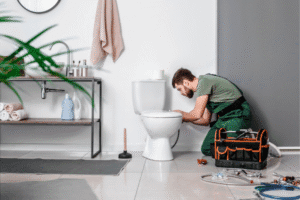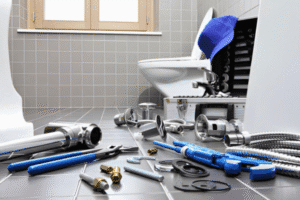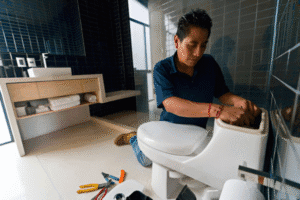A beautifully designed bathroom transforms your home, but it’s the small details, like bathroom hardware installation, that truly make it shine. Whether upgrading or renovating, proper installation of fixtures like towel bars, shower heads, and toilet paper holders is key for both style and functionality. One wrong move could lead to crooked fixtures or wall damage! Don’t worry—this guide will help you choose the right hardware, avoid common mistakes, and ensure a flawless installation for lasting results. Let’s get started!

You might think bathroom hardware installation is simple, but it’s crucial for your bathroom’s functionality and appearance. Proper installation keeps your fixtures secure and forestalls issues like leaks, falling towel racks, or crooked shelves.
It additionally ensures your restroom seems cohesive and polished. Every piece of hardware, from towel bars to shower heads, plays a key role in creating a practical and stylish space—done right, it enhances both form and function.
Choosing the right bathroom hardware is key to a successful bathroom hardware installation. With so many options, planning ahead helps narrow your choices.
Planning is crucial for a flawless bathroom hardware installation. Before drilling, take time to measure and plan placement carefully. For example, install towel bars 48 inches high for easy access, and set shower heads around 80 inches for comfort.
Ensure there’s enough space between fixtures to keep your bathroom feeling organized and functional. Proper planning enhances both the aesthetics and usability, giving you a bathroom that’s both stylish and practical.

To get your bathroom hardware installation done right, you’ll need the right tools. While it may seem like an easy task, having the correct tools on hand will save you time and frustration. Here’s a list of essential tools for your installation:
One of the first decisions you’ll need to make is whether to attempt bathroom hardware installation yourself or hire a professional. Both options have their pros and cons:
When you’re ready to start your bathroom hardware installation, follow these simple steps to ensure everything goes smoothly:
When it comes to bathroom hardware installation, even small mistakes can lead to big problems down the line. One of the most common errors is improper placement of fixtures. Misplacing a towel bar or showerhead can create unnecessary frustration and additional costs.
Ensure you measure twice before drilling! Additionally, neglecting to use wall anchors for heavier items can result in hardware falling off, leaving you with a messy and potentially costly repair job. Avoid these issues with careful planning!
One of the most fun aspects of bathroom hardware installation is choosing fixtures that match your design style. Whether you’re aiming for a sleek, modern look or a more traditional vibe, the right hardware can transform the space. Here are some popular trends in bathroom hardware:

Proper maintenance can extend the life of your bathroom hardware and keep it looking new for years. To maintain your bathroom hardware installation, follow these tips:
For a professional and hassle-free experience, trust JLM Handyman Services with your bathroom hardware installation. Our team of experts is highly skilled in handling all types of bathroom hardware, ensuring that each piece is installed securely and aligned perfectly.
Need help with your bathroom hardware installation? Call us today at 443-362-1179, or book your appointment online at JLM Handyman Services. Let us help you turn your bathroom into a beautiful, functional space!
✅ Common hardware includes towel bars, rings, shower heads, toilet paper holders, and vanity pulls. These fixtures are essential for both functionality and style.
✅ DIY installation is cost-effective if you’re handy with tools. However, hiring a professional ensures accurate, secure, and efficient installation.
✅ Towel bars should be 48 inches high, while showerheads are best placed around 80 inches for comfort.
✅ Install fixtures securely with wall anchors and seal water-prone areas with silicone. Regular cleaning helps prevent rust and damage.
✅ Essential tools include a power drill, measuring tape, level, screwdrivers, and wall anchors. Having the right tools ensures a smooth installation process.